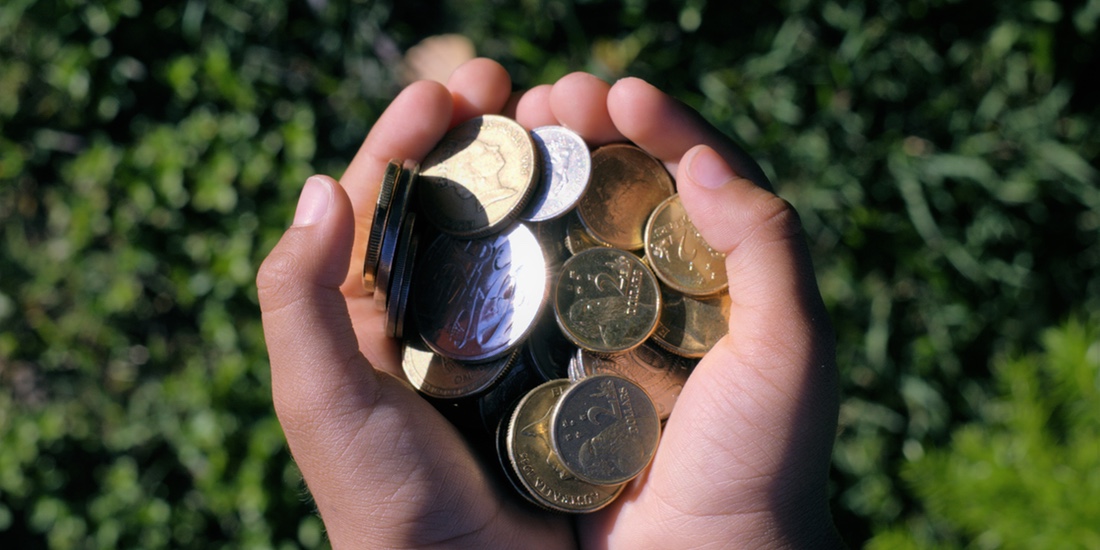Our Awesome Allowance System gives children practice in setting financial goals, making hard choices, and developing a sense for the value of money – a teaching opportunity for life.
Learn
Benefits of an Awesome Allowance System
An allowance system can be an effective, practical way of teaching a whole array of life skills, such as:
- Math pre-academics.
- Having control over wanting something, and then being able to get it / earn it.
- Understanding the difference between needs and wants.
- Confidence, empowerment and independence to make financial decisions.
- Setting financial goals and achieving them.
- Delayed gratification.
- A sense of fiscal responsibility and age-appropriate financial concepts (e.g., save, spend, give, invest).
- Respect and appreciation for the value of money (“It costs how much for that stuffed animal?!”).
There are many ways to do allowance. Many. And they will differ depending on the values you want to instill in your child. But remember that the benefit of allowance is largely tied to the conversations you have with your child around money. Talk about the money and the life lessons you’re trying to instill. Doling money out isn’t enough to teach your child financial literacy.
Just Remember
- The fundamental idea behind our Awesome Allowance System is to give children practice in setting financial goals, making hard choices, and developing a sense for the value of money.
- Talk about the money and the life lessons you’re trying to instill. Avoid giving money passively.
Do
Core Marbles
How to Create an Awesome Allowance System
Save, Spend, Give, Invest – Establish Four Containers of Money.
Use four jars, envelopes – whatever works for you – to keep Save, Spend, Give and Invest separate. The goal is for your child to receive enough allowance to have many opportunities to make financial decisions, and experience the process of saving and spending money.
- SAVE
- Children establish something for which they are saving.
- The idea is that your child sets a financial goal and saves towards it. It doesn’t need to be an expensive item.
- Fun tip – As a reminder of their goal, encourage your child to draw or cut-out a picture of what they are saving for, and tuck it inside their Save container.
- Children establish something for which they are saving.
- SPEND
- Think of this as petty cash or spending money.
- This is the container your child goes to for making small impulse purchases like knick-knacks, stickers, magazines, etc.
- No goal-setting here. This is your child’s opportunity to make an impulse purchase, and it can be a great opportunity to experience buyer’s remorse.
- Think of this as petty cash or spending money.
- GIVE
- This is the money your child can donate to an organization or give to a person in need.
- This can be structured (e.g., save up to make a large donation to a non-profit, etc.) or more informal (e.g., give it to a homeless person, buy food for the local food bank, etc.).
- This is the money your child can donate to an organization or give to a person in need.
- INVEST (for older children)
- You put money into this jar for every amount that your child puts in. Money in this jar is not for spending.
- For example, for every dollar that your child adds to this jar, you add 5 cents.
- The idea is that your child observes how this money grows with time. And that by investing, being patient and disciplined, they end up with more money than they initially started with.
- You put money into this jar for every amount that your child puts in. Money in this jar is not for spending.
Helpful Tips
- Keep allowance separate from chores.
- Children should get an allowance when you want them to have the experience of managing money and developing financial responsibility. They don’t get an allowance for doing anything other than being developmentally mature enough to start the system.
- Chores should be treated separately. Most chores are things that a child should do to contribute to the family or community because they are part of it. Ron Lieber has more documentation on this.
- While we generally suggest keeping allowance separate from chores, some families include a category of chores called ‘money jobs’ or ‘money chores’ for which a child earns a set amount of money. These may be larger, more infrequent chores like washing the car, raking leaves, cleaning out the garage, etc.
- Decide on a weekly amount.
- Some families use one dollar for each year of a child’s age. Other families choose the same amount for all children, regardless of age. Choose whatever is meaningful for you. There is no right or wrong here.
- For young children, we recommend prescribing how much money is allocated for each of Save, Spend, Give.
- As your child grows, you can collaborate on the amount of money earmarked for each category.
- Choose a day and time to make allowance a weekly routine.
- Embed math practice by helping your child count the money in each container.
- Talk, talk, talk. Discuss: How many more weeks will it take before your child reaches their Save goal item? What do they want to do with their Give money? How much more money have they earned because of Investing?
Also….
- Consider increasing the amount of allowance your child receives annually, around their birthday.
- Consider implementing an allowance system when your child begins to express an interest in wanting things, talking about buying things and/or understands the concept of money. This could be as early as around age 4.
